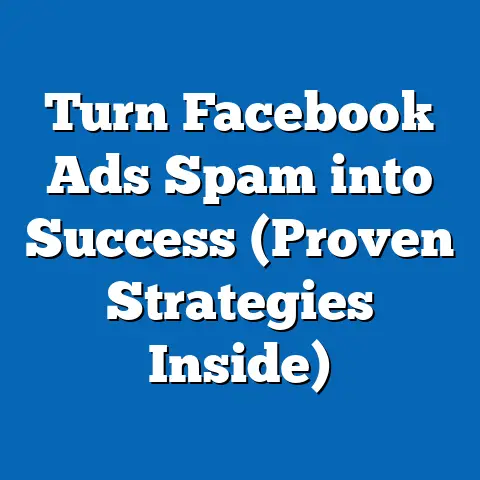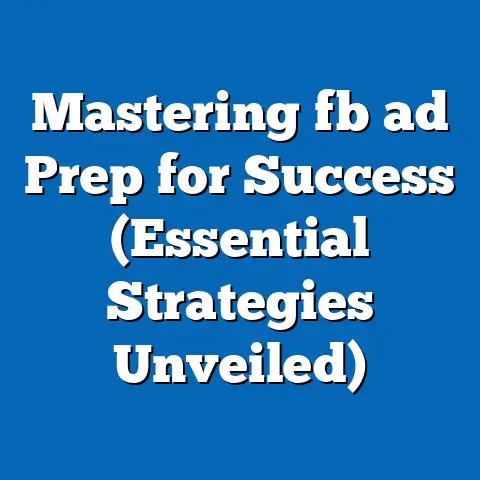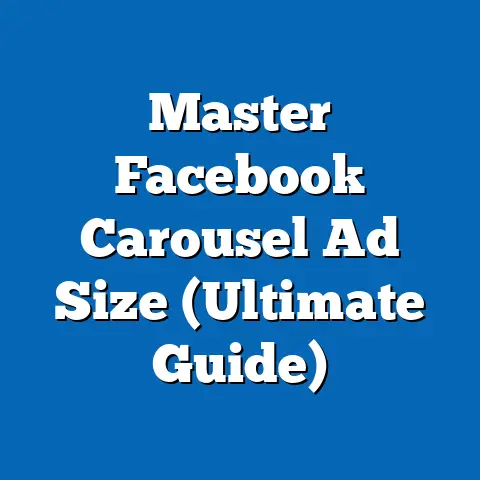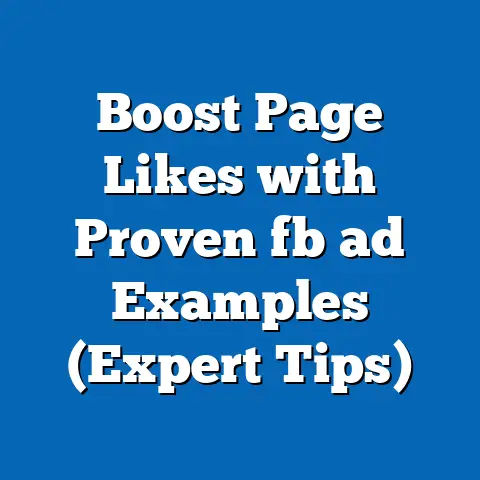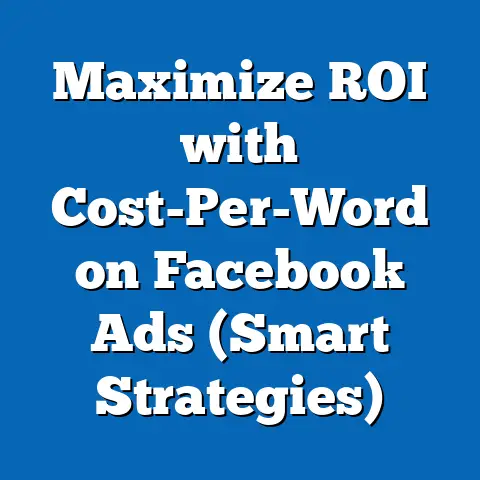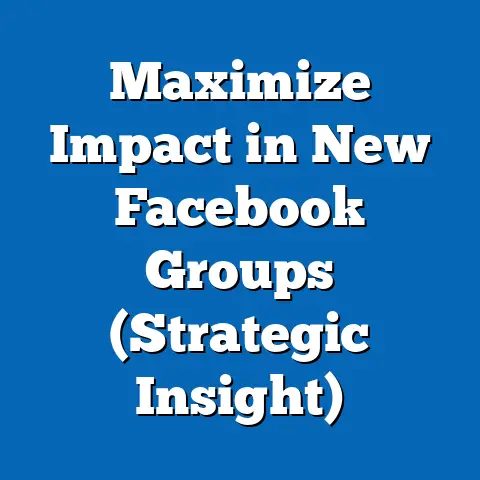Mastering Facebook Ads for Multiple Clients (Proven Strategies)
Mastering Facebook Ads for Multiple Clients: Proven Strategies
Imagine a bright, sunny day. The kind where the sky is a brilliant blue, and the air is crisp and full of potential. That’s how I see the world of Facebook advertising when you’re equipped with the right strategies. But just like the weather can change in an instant, so too can the landscape of digital marketing. This is especially true when you’re managing Facebook ads for multiple clients, each with their own goals, target audiences, and unique challenges. You need to be adaptable, strategic, and always ready to pivot.
I’ve been in the trenches of digital marketing for years, and I’ve learned firsthand what it takes to not only survive but thrive when managing multiple Facebook ad accounts. It’s not just about setting up campaigns and hoping for the best; it’s about truly understanding each client’s needs, crafting tailored strategies, and constantly monitoring and optimizing performance. In this guide, I’m going to share the proven strategies I’ve developed over the years to help you master Facebook ads for multiple clients and achieve remarkable results.
Understanding Client Needs and Objectives
Before you even think about creating an ad, you need to become intimately familiar with your client’s business. This goes beyond just knowing what they sell; it’s about understanding their core values, their target audience, and their overall business objectives. I’ve found that the onboarding process is absolutely crucial for gathering this information.
Think of it like this: you’re a doctor, and your client is a patient. You can’t prescribe the right treatment without first understanding their symptoms, medical history, and overall health. Similarly, you can’t create effective Facebook ads without understanding your client’s business goals, target audience, and competitive landscape.
Here are some key questions I always ask during the onboarding process:
- What are your primary objectives with Facebook ads? Are they looking to increase brand awareness, generate leads, drive sales, or something else entirely? Knowing their primary objective will guide your entire strategy.
- Who is your target audience, and what demographics should we focus on? Don’t just accept vague answers like “everyone.” Dig deeper to understand their ideal customer’s age, gender, location, interests, and behaviors. The more specific you are, the better you can target your ads.
- What is your unique selling proposition (USP) compared to competitors? What makes them different? What unique value do they offer? This will help you craft compelling ad copy that resonates with their target audience.
- What is your budget for Facebook ads, and what is your tolerance for risk? Understanding their budget constraints and risk appetite will help you create a realistic and sustainable ad strategy.
- What are your key performance indicators (KPIs)? What metrics will they use to measure the success of their Facebook ad campaigns? This will help you focus on the metrics that matter most to them.
For example, I once worked with a local bakery that wanted to increase foot traffic to their store. Their primary objective was to drive sales, and their target audience was local residents within a 5-mile radius. Their USP was their freshly baked goods made with locally sourced ingredients. Based on this information, I created a Facebook ad campaign that targeted local residents with ads featuring mouthwatering photos of their baked goods and a call to action to visit their store.
This foundational understanding shapes your entire ad strategy and messaging. Without it, you’re just throwing darts in the dark and hoping something sticks.
Takeaway: Invest time in understanding your client’s business, objectives, and target audience. This will set the foundation for a successful Facebook ad campaign.
Creating Tailored Ad Strategies
Once you have a solid understanding of your client’s needs, it’s time to develop a customized ad strategy. This is where the real magic happens. You can’t just use a one-size-fits-all approach; each client needs a strategy that is tailored to their specific objectives, target audience, and budget.
I like to segment my clients based on their objectives and target audiences. For example, I might have one segment for ecommerce clients who are looking to drive sales, another segment for local service-based businesses who are looking to generate leads, and another segment for brands who are looking to increase brand awareness.
Here’s how an ecommerce client’s strategy might differ from a local service-based business:
- Ecommerce Client: Focus on driving sales through product catalog ads, retargeting ads, and dynamic ads. Use detailed targeting options to reach customers who are likely to purchase their products. Track key metrics like conversion rate, ROAS (return on ad spend), and average order value.
- Local Service-Based Business: Focus on generating leads through lead generation ads, website traffic ads, and call ads. Target local residents within a specific radius of their business. Track key metrics like cost per lead, appointment bookings, and phone calls.
A/B testing is also critical for optimizing performance. I always recommend testing different creatives, ad copy, and targeting options to see what resonates best with each specific audience. For example, you might test different headlines, images, or call-to-action buttons to see which ones generate the most clicks and conversions.
I remember working with a clothing retailer who was struggling to get results from their Facebook ads. We decided to A/B test two different ad creatives: one featuring a model wearing their clothes and another featuring a flat lay of their clothes. To our surprise, the flat lay ad performed significantly better, generating a higher click-through rate and conversion rate. This taught me the importance of testing even the smallest details to see what works best for each client.
Creating effective ad copy and visuals is also essential. Your ad copy should be clear, concise, and compelling, highlighting the benefits of your client’s products or services. Your visuals should be eye-catching and relevant to your target audience.
For example, I worked with a travel agency who wanted to promote their Caribbean vacation packages. Instead of using generic stock photos of beaches, I recommended using user-generated content (UGC) from their past customers. We collected photos and videos from their customers and used them in our Facebook ads. The UGC ads performed incredibly well, generating a higher click-through rate and conversion rate than the stock photo ads.
Takeaway: Develop customized ad strategies for each client based on their objectives, target audience, and budget. A/B test different creatives and formats to optimize performance. Create effective ad copy and visuals that resonate with each specific audience.
Budgeting and Resource Allocation
Managing budgets effectively is crucial when handling multiple clients. You need to ensure that each client is getting the most out of their budget and that you’re allocating resources (both time and finances) appropriately across all accounts.
I always start by setting budgets based on client objectives and ad performance. If a client is looking to drive sales and their ads are performing well, I might recommend increasing their budget to maximize their ROI. On the other hand, if a client is looking to increase brand awareness and their ads are not performing as well, I might recommend decreasing their budget and focusing on optimizing their ad creatives and targeting options.
I also recommend using Facebook’s ad budget optimization features to get the best results. For example, you can use campaign budget optimization (CBO) to automatically distribute your budget across different ad sets within a campaign based on their performance. This can help you maximize your ROI and ensure that you’re not wasting money on underperforming ad sets.
Another important aspect of budgeting is allocating resources appropriately across clients. You need to ensure that you’re spending enough time on each account to monitor performance, optimize ads, and communicate with clients. I typically allocate my time based on the size of the client’s budget and the complexity of their ad campaigns.
I once made the mistake of overpromising on the number of hours I could dedicate to a new client while still managing my existing clients. As a result, I was stretched too thin and couldn’t provide the level of service that each client deserved. This taught me the importance of being realistic about my capacity and setting clear expectations with clients from the beginning.
Takeaway: Set budgets based on client objectives and ad performance. Use Facebook’s ad budget optimization features to get the best results. Allocate resources appropriately across clients based on their budget and campaign complexity.
Monitoring and Analyzing Performance
Continuous monitoring and analysis of Facebook ad campaigns is essential for ensuring that you’re on track to meet your client’s objectives. You need to track key performance indicators (KPIs) for different types of campaigns and analyze the data to identify areas for improvement.
Some of the key KPIs I track include:
- Click-Through Rate (CTR): The percentage of people who see your ad and click on it. A high CTR indicates that your ad is relevant and engaging to your target audience.
- Conversion Rate: The percentage of people who click on your ad and complete a desired action, such as making a purchase or filling out a lead generation form. A high conversion rate indicates that your landing page is optimized for conversions.
- Cost Per Click (CPC): The average cost you pay each time someone clicks on your ad. A low CPC indicates that your ads are efficient and cost-effective.
- Cost Per Acquisition (CPA): The average cost you pay each time someone completes a desired action, such as making a purchase or filling out a lead generation form. A low CPA indicates that your ads are effective at driving conversions.
- Return on Ad Spend (ROAS): The amount of revenue you generate for every dollar you spend on Facebook ads. A high ROAS indicates that your ads are generating a positive return on investment.
I use a combination of Facebook Ads Manager and third-party analytics tools to analyze data effectively. Facebook Ads Manager provides a wealth of data on your ad campaigns, including impressions, clicks, conversions, and cost. Third-party analytics tools, such as Google Analytics, can provide additional insights into your website traffic and user behavior.
Client reporting is also crucial for communicating results transparently to clients. I always create regular reports that summarize the performance of their Facebook ad campaigns and highlight key insights. I also make sure to explain what metrics matter most to them and how their campaigns are performing against their goals.
I once had a client who was very focused on vanity metrics like likes and shares. While these metrics can be useful for increasing brand awareness, they don’t necessarily translate into sales or leads. I had to educate my client on the importance of focusing on metrics that directly impact their bottom line, such as conversion rate and ROAS.
Takeaway: Continuously monitor and analyze Facebook ad campaigns. Track key performance indicators (KPIs) for different types of campaigns. Use Facebook Ads Manager and third-party analytics tools to analyze data effectively. Create regular client reports that summarize the performance of their campaigns and highlight key insights.
Adapting Strategies Based on Data
The world of Facebook advertising is constantly evolving. Facebook’s algorithm is always changing, new ad formats are being introduced, and consumer behavior is shifting. That’s why it’s so important to be agile and adapt your strategies based on performance data.
If you identify underperforming ads, don’t be afraid to make necessary adjustments. This might involve changing your ad creatives, ad copy, or targeting options. It might also involve pausing or deleting ads that are simply not working.
Staying updated on Facebook’s algorithm changes is also crucial. Facebook is constantly tweaking its algorithm to improve the user experience and deliver more relevant ads. These algorithm changes can have a significant impact on ad performance, so it’s important to stay informed and adjust your strategies accordingly.
I remember when Facebook announced a major algorithm change that prioritized content from friends and family over content from businesses. This change had a significant impact on the reach and engagement of many Facebook pages, including my clients’ pages. I had to quickly adapt my strategies by focusing on creating more engaging content and using Facebook’s paid advertising options to reach a wider audience.
Here’s an example of a successful pivot I made from data-driven insights: I was working with a client who was selling a high-end product. We were initially targeting a broad audience with our Facebook ads, but we weren’t seeing the results we wanted. After analyzing the data, I realized that our ads were resonating more with a smaller, more affluent audience. I decided to narrow our targeting options and focus on reaching this specific audience. As a result, our conversion rate increased significantly, and we were able to generate a much higher ROI for our client.
Takeaway: Be agile and adapt your strategies based on performance data. Identify underperforming ads and make necessary adjustments. Stay updated on Facebook’s algorithm changes and adjust your strategies accordingly.
Conclusion
Mastering Facebook ads for multiple clients is a challenging but rewarding endeavor. It requires a deep understanding of each client’s business, a tailored ad strategy, effective budgeting and resource allocation, continuous monitoring and analysis, and the ability to adapt strategies based on data.
Remember, adaptability, data-driven decision making, and ongoing communication with clients are key to success. Embrace the dynamic nature of Facebook advertising and apply these proven strategies to help your clients thrive in the digital landscape.
The world of Facebook advertising is constantly changing, but with the right strategies and a willingness to learn and adapt, you can achieve remarkable results for your clients and build a successful digital marketing business. Now, go out there and make some magic happen!

